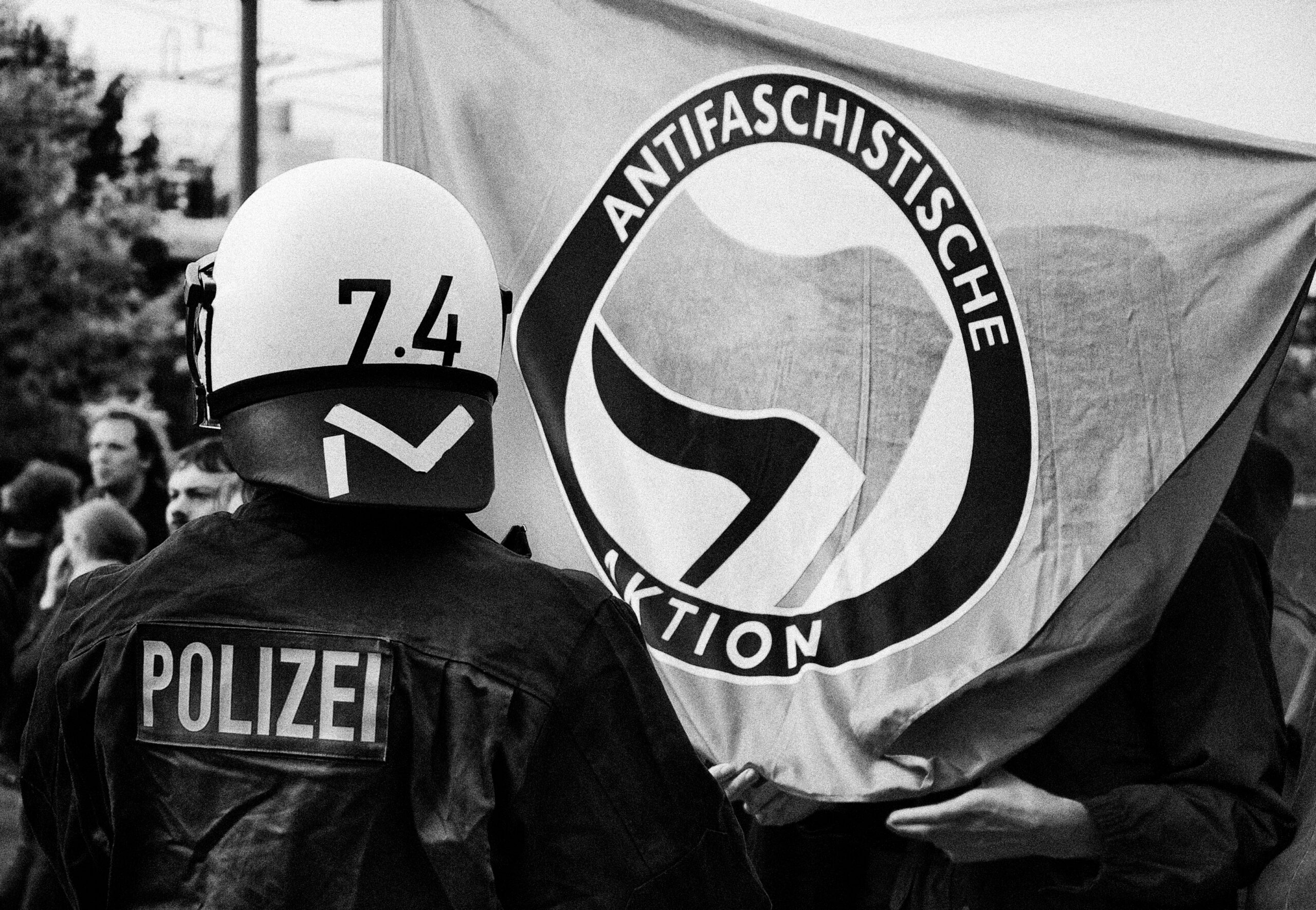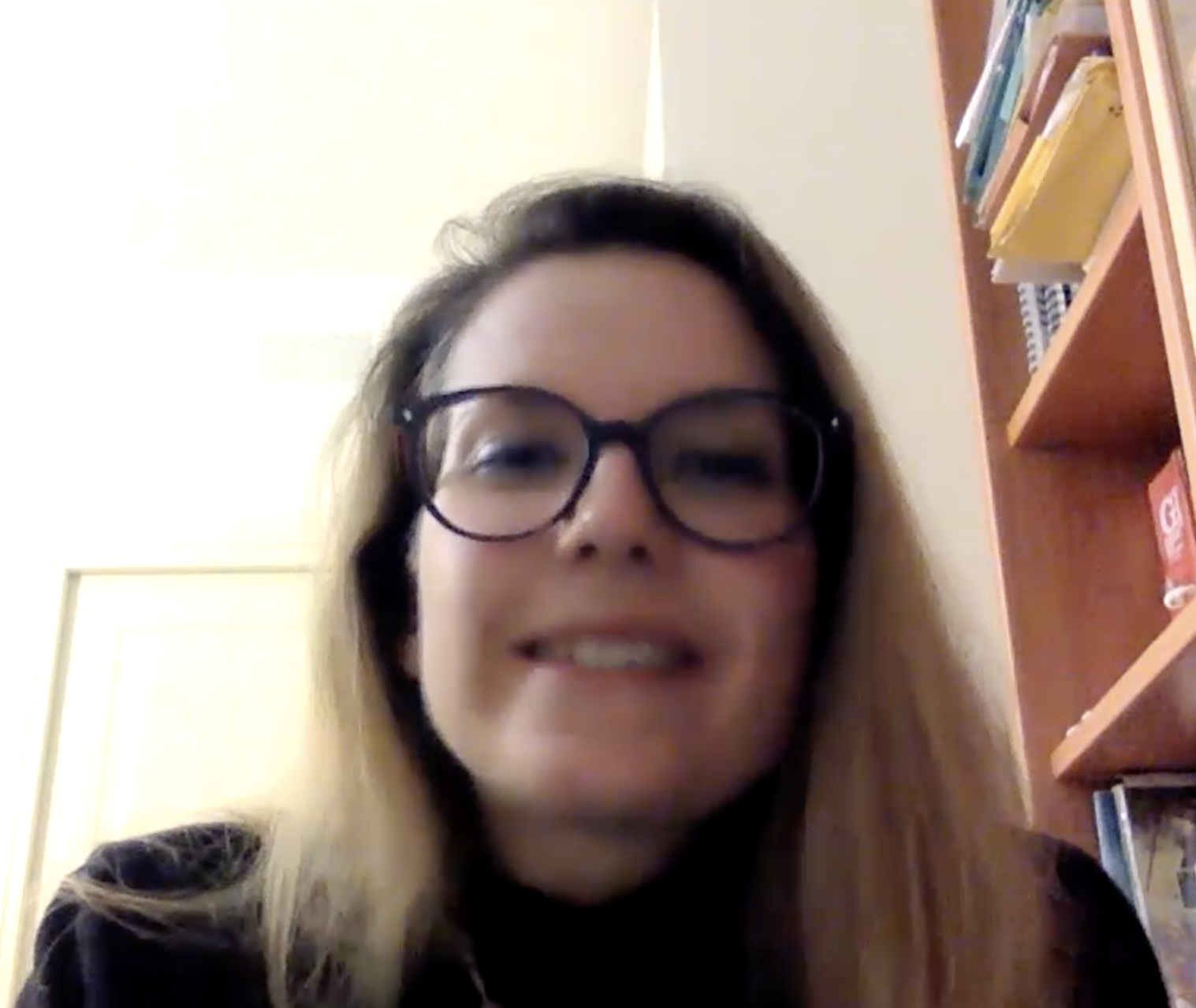By Agostino Bono, Rodney Ekow Buah, Isabelle Despicht, Sophie Herzog Sønju - Crime, Extremism and Terrorism Team
Introduction
The name Antifa was first used in Nazi Germany by a coalition of far-left parties which were created to oppose the growing power of Nazism. The term Antifa is a shortened form of antifaschistisch (anti-fascist). Its members were driven and are still driven by beliefs which combat fascist, racist and right-wing ideologies, through any means both legal and illegal.
Antifa, a decentralised movement, follows both anarchist and communist ideologies. This is reflected in the group's symbols, which incorporate the red flag of the 1917 Russian Revolution and the black flag of 19th-century anarchists.
Conservative pundits and politicians, including former President Donald Trump, have repeatedly accused Antifa of participating in left-wing protests against police brutality and racism in the United States, particularly from the mid-2010s and during the 2017 Unite the Right rally in Charlottesville, Virginia.
This article will explore whether Antifa poses a threat to democracy and whether it can be defined as a terrorist group. Much of the relevant literature suggests that Antifa is not a threat to democracy and lacks the characteristics of a terrorist group. The origins of Antifa are rooted in anti-authoritarianism and anti-fascism, which some argue align it more closely with democratic principles. However, others believe that Antifa's violent and occasionally illegal tactics pose a threat to democracy, emphasizing that such methods may undermine free expression, a fundamental aspect of democratic society.
Historical Background
The Antifa movement emerged in Germany and Italy in opposition to the rising Nazi and fascist ideologies. This is exemplified by groups such as the Antifaschistische Aktion in Germany and the Arditi del Popolo in Italy. The anti-fascist ideology gained momentum and spread its influence beyond Germany and Italy. In October 1936, tens of thousands of anti-fascists reacted to a march of British Union fascists on Cable Street and Whitechapel by throwing rocks and homemade bombs.
While anti-fascism decreased worldwide due to the fall of Nazi Germany, it reemerged in the 1970s to counter an increase in Neo-Nazi activity in Europe, Asia and the United States.
Since the 1980s, the United States has witnessed the highest level of anti-fascist protests. For example, the Anti-Racist Action Network, which operated between 1987 and 2013, and the Puget Sound John Brown Gun Club are examples of active anti-fascist and anti-racist movements.
In 2016, the election of Donald Trump strengthened the activity of anti-fascist groups. Furthermore, following the death of George Floyd in 2020, there was evidence of increased anti-fascist activism as a reaction to police brutality. However, the FBI later stated that ordinary criminals were responsible for the acts of violence and looting and not groups like Antifa.
Antifa groups are also operating in Europe in countries such as Germany, Italy, the Netherlands, the United Kingdom, Sweden and Ukraine. In Germany, for example, in October 2016, far-left groups in Dresden led a peaceful protest on the occasion of the anniversary of the German reunification on 3 October, for "turning Unity celebrations into a disaster". Furthermore, Antifa sympathizers took to the streets in Hamburg during the 2017 G20 summit, some say, in reaction to Donald Trump’s accusatory rhetoric.
Tactics & Activities of Antifa
The Antifa movement employs a variety of tactics aimed at countering far-right and authoritarian ideologies. Central to its approach is the belief that direct action is necessary to confront these threats. Protest demonstrations are a common method, where participants gather to voice their opposition to fascism and xenophobia. These protests often escalate into clashes with far-right extremists, particularly during significant events like the Charlottesville rally and protests in Portland. Antifa’s militant tactics can include physical altercations, raising concerns about public safety and the ethical implications of violence in political activism.
In addition to street confrontations, Antifa groups engage in community organising and outreach to raise awareness about far-right extremism. They frequently utilise social media to mobilise supporters, disseminate information, and document the activities of far-right organisations. Authorities in various countries have increased scrutiny of Antifa due to concerns about violence and public safety. The EU's TE-SAT report has highlighted the rise in violent actions linked to left-wing extremism, prompting law enforcement to strengthen their responses.
In this context, some Antifa members in Austria took part in 2022 in training camps designed to equip activists with skills for protest, self-defense, and community organisation. These camps serve as spaces for learning techniques related to civil disobedience and strategic communication, but they also raise concerns about radicalisation and the potential for increased violence. While Antifa’s actions are rooted in a commitment to antifascism, they face ongoing scrutiny regarding their methods. Critics argue that violent tactics can undermine broader anti-fascist goals, complicating the movement's public image and effectiveness. As Antifa continues to navigate these challenges, its capacity to adapt its activities in response to the evolving political landscape will be pivotal in determining its long-term impact.

Global Presence and Influence
Antifa’s global presence has expanded significantly in recent years. Its influence is remarkably evident in countries like the United States, where it engages in direct action against far-right extremism. As a decentralised movement, Antifa lacks a formal structure, allowing it to spread and operate independently across the world. The movement is viewed as “a reaction to the extreme right by concerned left-wing activists”. As far-right extremist politics gain momentum globally, anti-fascist movements have risen in response. According to the European Parliament, Antifa is not a single organisation, but a “collective name” used by various informal, autonomous groups claiming to be anti-fascist”. This broad, open identity allows anyone opposing fascism to align themselves with the movement.
With the growing influence of the far-right political party Alternative für Deutschland there has been a significant increase in the presence and potential threat of the anti-fascist movement in Germany. Modern militant German Antifa groups have been involved in violent confrontations, notably between 2018 and 2020, attacking and singling out German neo-nazis. The same applies to Sweden, where the far right political party Sverigedemokraterna(SD) has had a surge in popularity, with an increase of around 20% in the polls in the past 20 years. Consequently, Swedish Anti-fascist Aktion (AFA) and Swedish Revolutionary Front have carried out acts of political violence, including an attack on former SD politician Vávra Suk.
In the US, Antifa grew in popularity and presence during Donald Trump’s presidency in 2016-2020. This was partly due to his reported alignment with far-right groups such as the Proud Boys, but also due to the increased engagement regarding far-right politics in general in the US. Trump’s rhetoric, including his refusal to condemn white supremacist groups, shifted political discourse and drew attention to Antifa’s opposition. Antifa protesters frequently countered far-right demonstrations, sometimes engaging in violent confrontations. This led to the movement being labeled by critics as rioters and looters, with Trump at one instance saying “Somebody’s got to do something about antifa and the left because this is not a right wing problem.”
Conclusion
Antifa's history, decentralised structure, and focus on anti-fascism have shaped its role as a modern movement. While often associated with far-left ideologies such as anarchism and communism, its primary goal is to resist fascism, racism, and authoritarianism. Although its use of violence and militant tactics has sparked debate, many studies suggest that Antifa is neither a terrorist group nor a direct threat to democracy. Its anti-authoritarian stance is sometimes seen as aligned with democratic values, opposing what it considers oppressive forces. However, critics argue that its violent methods may undermine democracy by limiting free speech and opposing viewpoints.
Looking ahead, Antifa's relevance may depend on the political landscape. As far-right extremism grows in some areas, Antifa could continue to serve as a counterbalance. Its decentralized structure allows for flexibility and adaptability. Nevertheless, reliance on violence could harm its cause in the long term, as public support may decline if it is viewed as more destructive than constructive. Increased scrutiny from authorities is also anticipated if violent incidents continue to be associated with Antifa.
The question of whether Antifa qualifies as an extremist group remains debated. While it employs militant tactics and occasionally breaks the law, its goals are centered on protecting marginalized groups rather than advocating for authoritarian control. This places Antifa in a complex position; despite operating outside mainstream activism, it is not typically regarded as an extremist movement.

